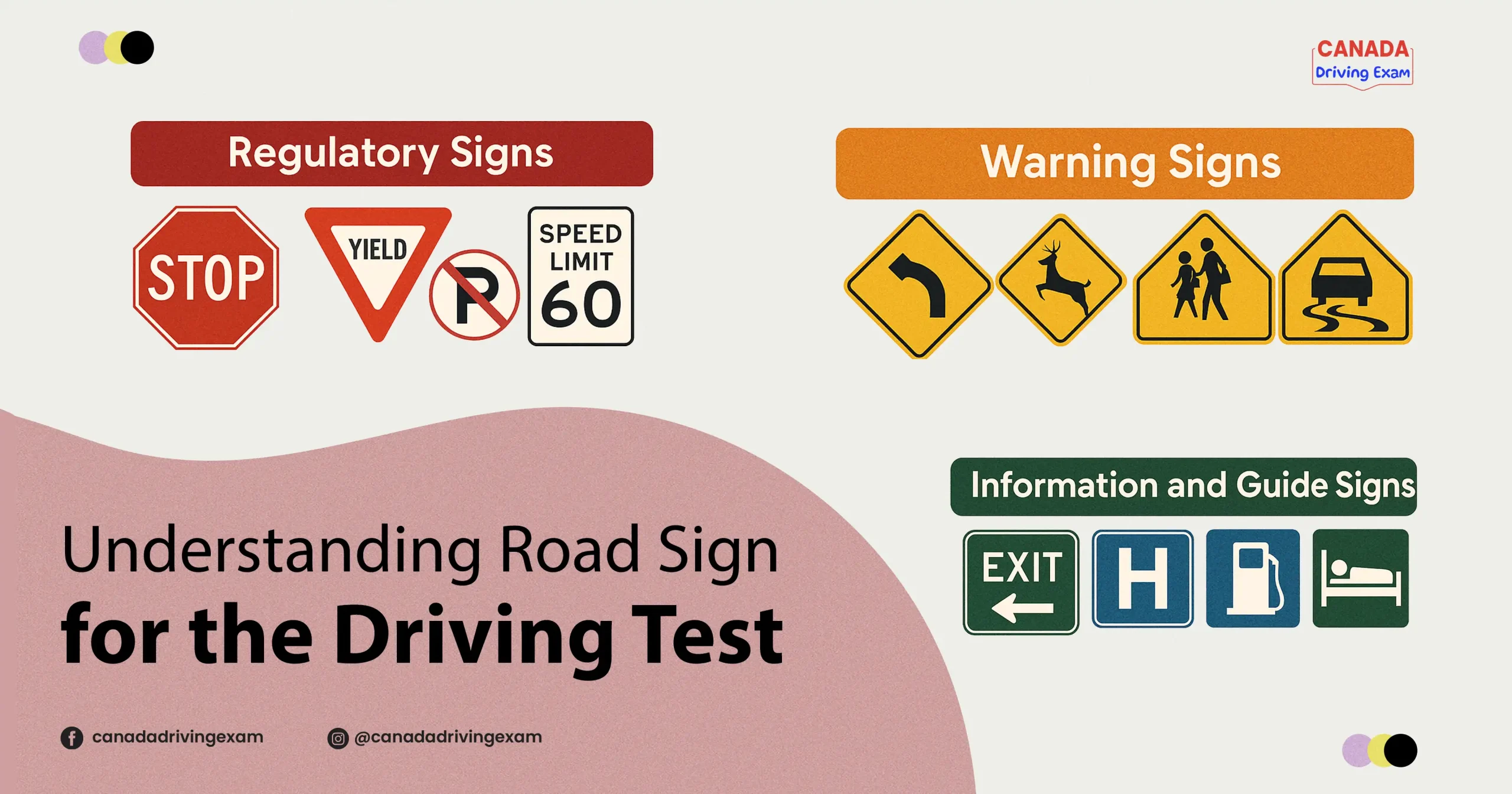Understanding Ontario Road Signs for the G1 Test: Complete Guide
-
 Canada Driving Exam
Canada Driving Exam - Update on. 14 Apr, 2025

Road signs are a crucial part of the Ontario G1 written test, and understanding them is essential for new drivers. These signs help regulate traffic, provide warnings, and give helpful information. Whether you’re just starting to prepare or reviewing before the exam, this guide will walk you through everything you need to know about Ontario road signs for the G1 test.
1. Categories of Road Signs in Ontario
Ontario road signs are divided into three main categories:
Regulatory Signs
These signs indicate rules and laws that must be followed. Disobeying them can result in penalties.
-
Examples: Stop sign, Yield sign, No parking, Speed limits
Warning Signs
These alert drivers to upcoming hazards or changes in the road.
-
Examples: Curve ahead, Deer crossing, School zone, Slippery road
Information and Guide Signs
These help with navigation, services, and directions.
-
Examples: Exit signs, Hospital ahead, Gas stations, Rest areas
2. Colors and Shapes: What They Mean
Ontario road signs follow color and shape conventions to make them easy to recognize:
| Shape | Meaning |
|---|---|
| Octagon | Stop |
| Triangle (point down) | Yield |
| Circle | Railway crossing |
| Rectangle/Square | Information or regulatory |
| Diamond | Warning |
| Pentagon | School zone/crossing |
| Color | Indicates |
|---|---|
| Red | Stop, Prohibitions, Yield |
| Yellow | General warnings |
| White with black | Regulatory (speed, lane use) |
| Blue | Information or services |
| Green | Directions or permitted movements |
| Orange | Construction or temporary warnings |
3. Most Common G1 Test Road Signs
Here are some signs that frequently appear on the G1 written test:
-
Stop Sign – Full stop required before proceeding.
-
Yield Sign – Slow down and give way to other traffic.
-
School Zone Sign – Watch for children and reduce speed.
-
Slippery When Wet – Drive cautiously, especially during rain or snow.
-
Do Not Enter / No U-Turn / No Parking – Regulatory signs that are often trick questions on the test.
-
Speed Limit Signs – Know the urban (50 km/h) and rural (80 km/h) speed limits.
-
Merging Traffic – Be aware of other vehicles joining your lane.
You can view visual examples of these on our Road Signs Practice Page.
4. Flashcards and Memory Tips
Studying road signs doesn’t have to be boring. Try these tips:
-
Make digital flashcards with sign images and meanings.
-
Use free tools like Quizlet or Canva to create custom sign sets.
-
Group signs by shape or color when reviewing.
-
Test yourself daily with random signs from our website.
Pro Tip: Focus more on yellow diamond-shaped signs and red regulatory signs—they appear most frequently on the test!
5. Practice Question Examples
Try out a few sample questions based on Ontario’s road sign rules:
Question 1: What does a yellow diamond-shaped sign with a deer image mean?
a. Deer crossing zone
b. No wildlife allowed
c. Hunting zone
d. Animal rescue ahead
Correct Answer: a
Question 2: What does a red circle with a diagonal line through a left-turn arrow mean?
a. U-turn permitted
b. Turn left anytime
c. No left turn allowed
d. Left lane ends ahead
Correct Answer: c
Want more practice? Visit our G1 Practice Test Section.
Final Thoughts
Mastering road signs is one of the easiest ways to score well on the G1 written test. With the right tools and some daily review, you’ll confidently recognize each sign’s meaning on test day. Don’t forget to check out our full list of road sign questions and flashcards for better results.
Ready to practice more? Click here to take our free G1 Road Sign Quiz
Last Update on: April 21st, 2025

Please Comment Below